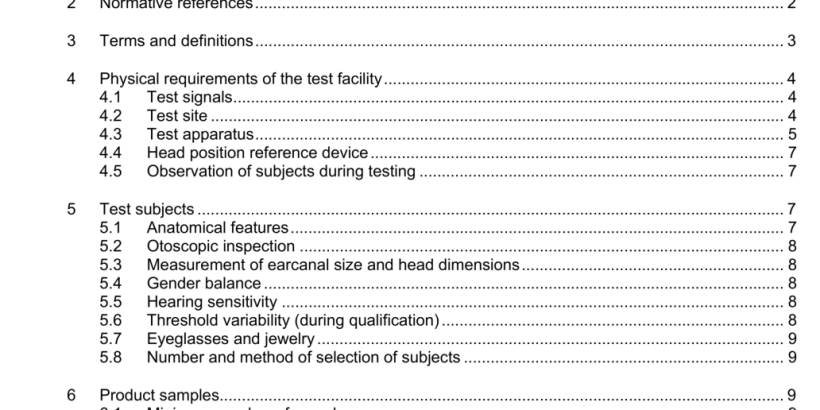ANSI ASA S12-2016 pdf download.Methods for Measuring the Real-Ear Attenuation of Hearing Protectors
1.1 Scope
This standard specifies laboratory-based subjective-method for measuring, analyzing, and reporting the passive noise-reducing capacity of hearing protection devices. The methods consist of psychophysical tests conducted on groups of human subjects to determine real-ear attenuation at threshold. Two methods are provided, differing in their subject selection, training, hearing protector ftting procedures, and experimenter involvement, but corresponding in all electroacoustic and psychophysical aspects. One method, designated trained-subject fit, is intended to describe the upper limits of hearing protector performance for devices fitted by groups of carefully trained users. The second method, designated inexperienced-subject fit, is conducted with persons with lttle or no experience with respect to the use of hearing protection. It approximates the attenuation that has been achieved by groups of users as reported in real-world occupational studies (Berger et al, 1998).
1.2 Applications
The selection of test method, trained-subject fit or inexperienced-subject fit, is based upon the intended application. Method-A trained-subject fit values are useful to estimate performance for individually trained and well-motivated users, as well as in the design of hearing protectors, to provide a theoretical understanding of their performance limitations, and for routine testing for quality assurance purposes. Method-B inexperienced-subject fit is intended to provide an approximation of the upper limits to the attenuation that can be expected on average for groups of occupational users. Properly trained and motivated individuals can potentially attain larger amounts of protection, in closer agreement with the trained-subject fit data, especially for earplugs, than the inexperienced-subject fit values found using this standard. However, inexperienced-subject fit values provide a closer correspondence to real-world performance for groups of users than do the trained-subject fit data.
The methods of this standard yield data that are collected at low sound pressure levels (close to the threshold of hearing) but which are also representative of the attenuation values of hearing protectors at higher levels. One exception occurs in the case of passive amplitude-sensitive hearing protectors for sound pressure levels above the point at which their level-dependent characteristics become effective. At those levels the methods specified in this standard are inapplicable; they will usually underestimate sound attenuation (Berger, 1986). Another exception exists with respect to predicting the noise attenuation of high-level impulsive sounds such as from weapons fire, over 140 dB peak sound pressure level, because of possible level-dependent behavior of hearing protectors when exposed to such sounds. To evaluate performance at peak SPLs greater than 140 dB guidance may be found in ANSI/ASA S12.42. The low-frequency (below 500 Hz) real-ear attenuation at threshold data resulting from this standard may be spuriously high by a few decibels, with the error increasing as frequency decreases. This results from masking of the occluded-ear thresholds caused by physiological noise during testing (Berger and Kerivan, 1983; Schroeter and Poesselt, 1986). The errors are largest for semi-insert and supra-aural hearing protectors, for small-volume earmuffs, and for shallowly inserted earplugs. The errors are smallest for large-volume earmuffs and more deeply inserted earplugs. This standard does not address issues pertaining to computation of protected noise exposures or rating systems for applying hearing protector attenuation values (see ANSI/ASA S12.68), nor does it specify minimum performance values for hearing protectors, or address comfort or wearability features.ANSI ASA S12-2016 pdf download
